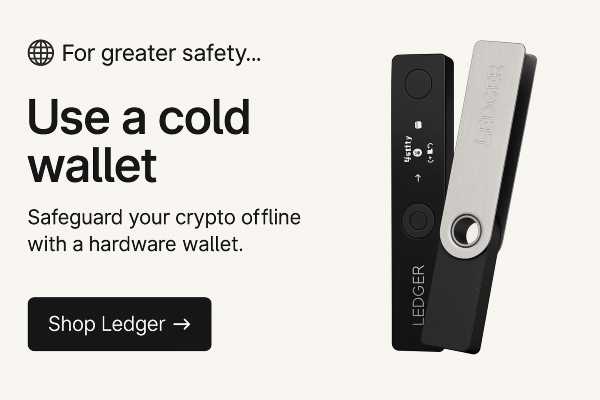It’s Just Dust… Until It’s Not

How Dust Transactions Target Your Wallet—and What You Can Do to Stay Safe
Crypwealthy Free Tier · Educational Series
Estimated Read Time: 4 min
💡 What Is a Dust Transaction?
A dust transaction is when a tiny, nearly worthless amount of cryptocurrency (often a few Satoshis or fractions of a token) is sent to your wallet. This isn’t a mistake—it’s usually the start of a scam attempt.
These transactions are typically:
- Unsolicited
- Traceable
- Strategic
The scammer’s goal? To monitor your wallet behavior, compromise your privacy, or bait you into interacting with malicious smart contracts.
🎯 What Is a Dust Attack?
A dust attack goes a step further. It uses dust transactions to track or deanonymize wallets. Here’s how it works:
- Scammers send dust to many wallets.
- They monitor movement of funds from these wallets.
- If you move the dust or link it to another transaction, they may connect your identity or wallets together.
- Some dust tokens carry malicious code that, if interacted with, grants permission to drain your funds.
This is often called a "bait-and-track" tactic in blockchain analytics.
Important: Some tokens can’t be safely removed and attempting to send or swap them can trigger wallet-draining smart contracts.
🛡️ What Should You Do?
DO NOT interact with unknown or suspicious tokens. Follow these steps:
✅ Safe Practices
- Ignore the dust. Don’t move it, swap it, or try to delete it.
- Use wallet filters. Many wallets allow you to hide low-value tokens.
- Use token revoker tools like Revoke.cash to check if you've unknowingly approved malicious tokens.
- Double-check contract addresses before interacting with any asset.
🧯 If You're Concerned
- Move your funds to a new wallet (cold preferred).
- Only move verified tokens—never bring the dust with you.
🔒 Hot Wallet vs Cold Wallet: Know the Difference
A dust attack is dangerous because it often targets hot wallets. Here's how the two types compare:
| Hot Wallet | Cold Wallet | |
|---|---|---|
| Storage | Online (browser, app) | Offline (hardware device, paper wallet) |
| Convenience | High – Easy access for trading | Low – Requires manual connection |
| Security Risk | Higher – Exposed to online threats | Lower – Immune to online hacks |
| Ideal For | Daily transactions, small holdings | Long-term storage, large holdings |
Key takeaway: If you’re holding serious value, a cold wallet is a must.
🧰 Crypwealthy Recommends: Secure Your Assets with a Ledger
Protect yourself from dust attacks, wallet drainers, and browser-based scams by moving your assets to a cold wallet.
🛡️ We use and trust Ledger for secure, offline storage.
👉 Buy a Ledger through our affiliate link to support Crypwealthy and protect your crypto the right way.

🔁 Crypwealthy Takeaway
A few cents of "dust" might look harmless—but in crypto, everything is traceable.
Dust attacks are about control and surveillance, not value. Stay one step ahead by:
- Avoiding interaction
- Using token revokers
- Moving funds to cold storage
The more noise in crypto, the more your defense is clarity.
Stay safe. Stay sovereign.
Want deeper protection strategies, narrative analysis, and crypto tools that actually work?
Upgrade to Crypwealthy Plus and position yourself like an insider—not a target.
⚠️ Disclaimer
This content is for educational and informational purposes only. It does not constitute financial, investment, or legal advice. Always conduct your own research (DYOR) and consult a professional advisor before making any investment decisions. Crypwealthy is not liable for any losses or decisions made based on this content. Use wallets, tools, and external links at your own discretion.



Comments ()